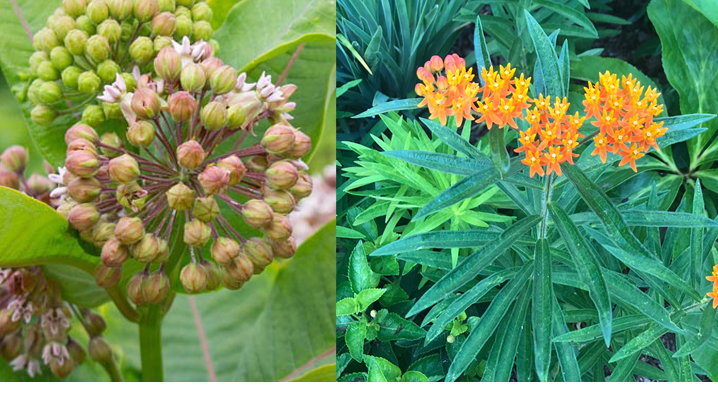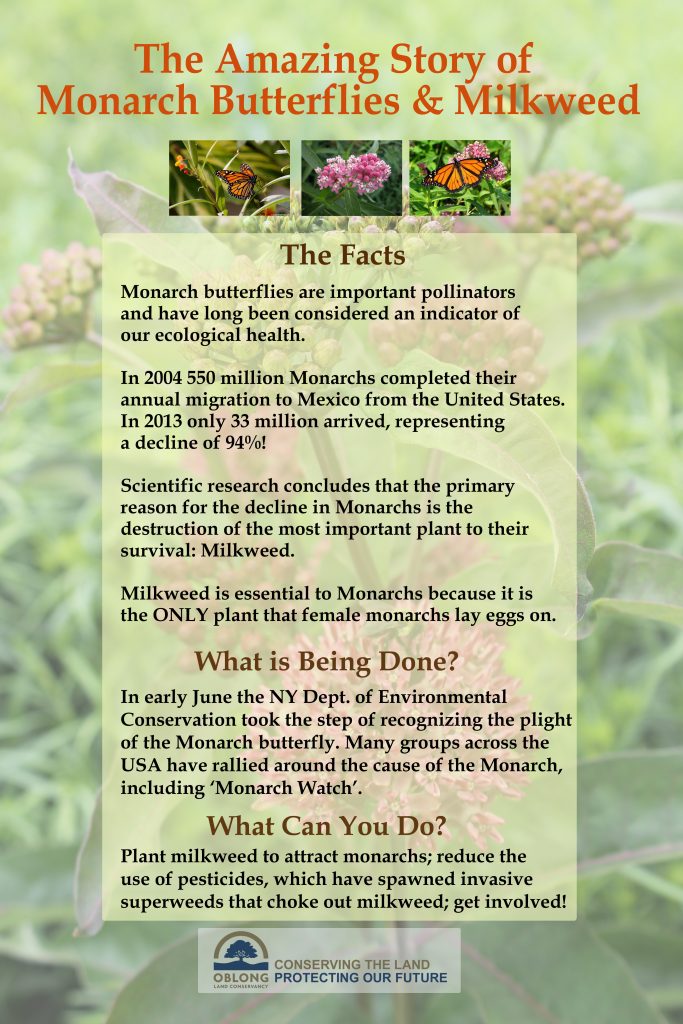designed for the way women work.

Growing Milkweed in Your Garden
Category: Garden Planning, Plant Ideas & Info, Presenting "The Curious Gardener"

Three of the most popular species of native milkweed are Asclepias syriaca (common milkweed), Asclepias tuberosa (butterfly weed) and Asclepias incarnata (swamp milkweed). There are more than 100 native species in all! (These 3 species are shown in the photo below from left to right)

Milkweed is the only plant that monarch butterflies will lay their eggs on, so it’s an important plant in the pollination cycle. I have all three in my garden and find they are also beautiful additions to a border or meadow. Butterfly weed is a low growing plant with bright orange blossoms that emerge in mid summer. Swamp milkweed grows about 3-4′ high and has bright pink blossoms that emerge in early summer. Common milkweed is often seen in meadows where it is free to self seed and spread. Avoid a confined garden space or it will take over. When in bloom I think it’s one of the prettiest of the milkweed species!
Asclepias seeds are available from Johnny’s Selected seeds among others. Ruth advises starting them out of doors uncovered in fall to overwinter and germinate next spring when it gets warm, OR stratifying (soaking overnight and refrigerating seeds in a plastic bag) over the winter before sowing outdoors in spring.
Milkweeds resent being divided or moved due to their deep taproots.
Here are some more interesting facts about milkweed and monarch butterflies. For more information about native species of milkweed where you live, click here and download a pdf.




I love any articles and information about milkweed. I not only plant it but I allow the wild to grow anywhere it wants. It is probably a good thing that I live way out in the country because I have all these native plants growing wherever they are happy. I love to see the monarchs on them as well as all the other insects that visit them. It is a great science lesson when you can get a child interested in sitting still long enough to watch the various bugs crawling all over the plant. Thank you for this article and for the download!
Thanks for this concise info on milkweeds and Monarchs especially the pictures and the classification names.
Hi! Enjoyed your article on milkweed, however, urge you to educate your customers about the downside of common milkweed. Planted in my perennial bed 3 years ago it has taken over 1/3 of my garden. Please give information about the appropriate locations to plant common milkweed. The Monarchs loved these plants but my neighbor did not. Am now substituting more tropical milkweed. Thank you!
where can I get milkweed seeds?
Jill, Ruth responded to your question as follows: Asclepias seeds are available from Johnny’s Selected seeds among others. Should be started out of doors uncovered in fall to overwinter and germinate when it gets warm next spring, OR stratify (soak overnight and refrigerate seeds in a plastic bag) over the winter before sowing outdoors in spring.
Marlene, Ruth responded to your comment as follows: Yes, A. syriaca-common milkweed, is quite invasive by seed and by rhizomes. Curtail self-seeding by routine deadheading before the seed capsules split open and release the seeds that are spread on the wind. Ideally plant this species in a spot where it can be allowed to spread rather than in a confined garden space.